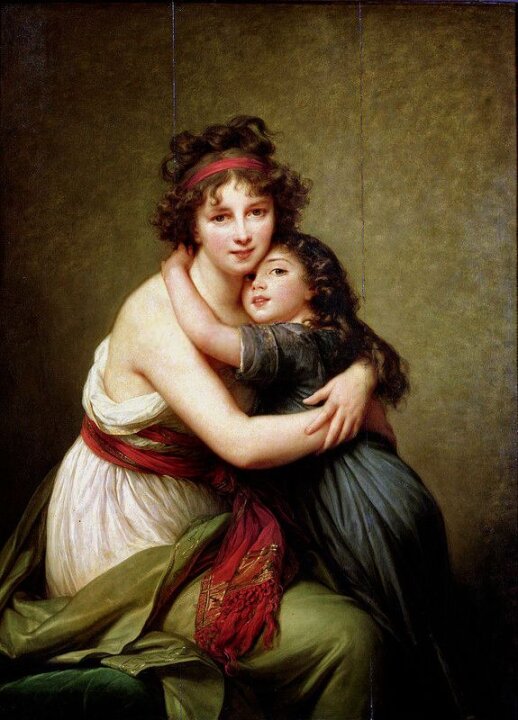The art that I love - 14
The love of a mother for her daughter. Madame Vigée Le Brun, Self-Portrait with her Daughter, Julie. It's a modest portrait of a mother with her daughter full of intensity and intimacy. It's the painting that I normally point to to illustrate Talleyrand's famous observation about La douceur de vivre.
Known as the painter of the Queen Maria Antonieta, who took her as her favourite, Louise Élisabeth Vigée Le Brun is considered to be one of the best portrait painters of the 18th century. However, only a few years after finishing her self-portrait the French Revolution wreaked havoc with everyone's lives.
Madame Vigée Le Brun was born in Paris in 1755. Having received some training from her portraitist father, who died when she was twelve, she was encouraged to continue her artistic studies and by the age of fifteen she had already developed a modest clientele for her portraits.
In 1789, she was forced to flee France because of her association with the queen. She traveled with her daughter to Italy where, in 1790, she was elected to membership in the Accademia di San Luca, Rome. Independently, she worked in Florence, Naples, Vienna, St. Petersburg, and Berlin.
Truly, she was one of the most technically fluent portraitists of her era, and her pictures are notable for freshness, charm, and sensitivity of presentation. During her long career she painted some 900 pictures, including some 600 portraits and about 200 landscapes.
Her only child, Jeanne Julie Louise Le Brun, was born in 1780. Although mother and daughter would ultimately become estranged, Julie appears to have been doted upon as a child. In the panting there's much to indicate that the artist felt genuine love towards her daughter
[media=https://youtu.be/sxK9qrdw5F8]




